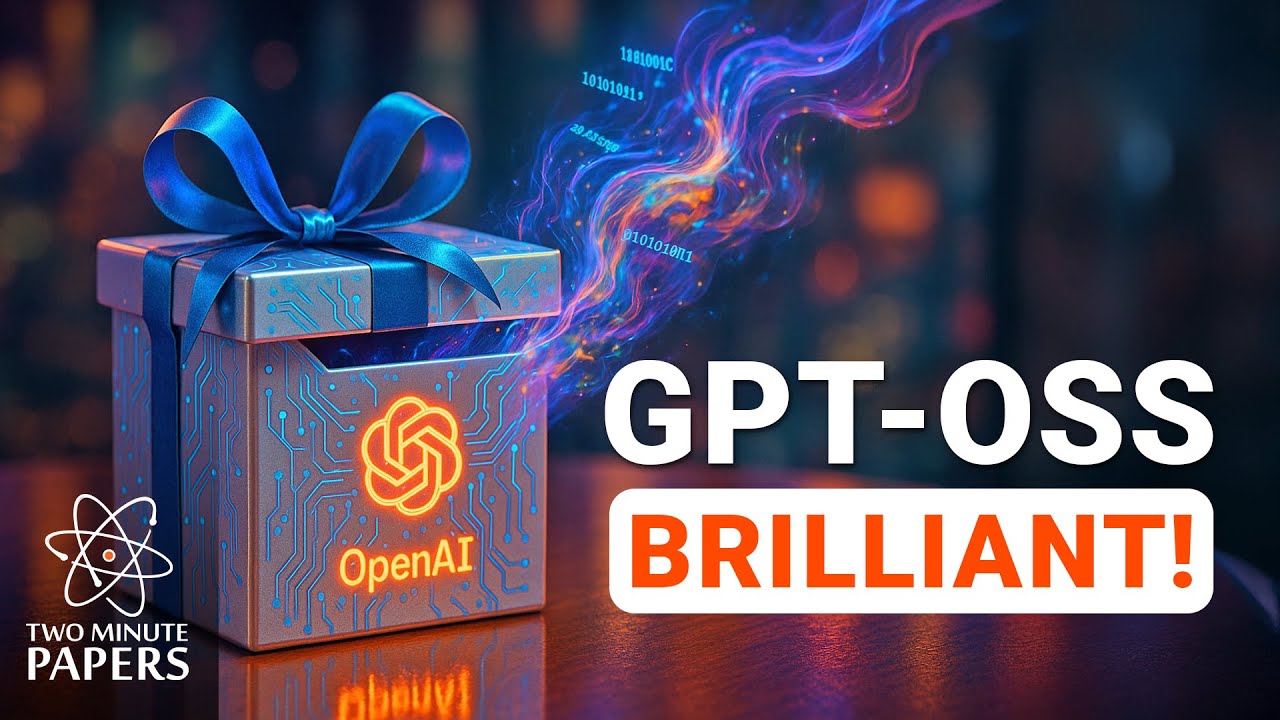OpenAI’s new open-weight model, GPT-OSS, offers impressive performance across various tasks—including health-related questions—while being affordable, customizable, and capable of running offline on personal devices. Despite some limitations like occasional hallucinations and text-only input, its accessibility and low training cost signal a promising future for free, high-quality AI models.
The video introduces OpenAI’s newly released open-weight AI model called GPT-OSS, describing it as a groundbreaking development akin to finding a fully functional space shuttle in your garage. This model is available in two versions: a high-end one for powerful laptops and a medium-sized one that can run on lower-end computers, with the promise that it will soon be able to run on smartphones. GPT-OSS performs impressively across various tests, including the challenging “Humanity’s Last Exam,” where it correctly answers 19 out of 100 difficult scientific questions, a significant improvement over the closed GPT-4o model.
One of the standout features of GPT-OSS is its unexpectedly strong performance on health-related questions, rivaling some of the best proprietary AI solutions in this domain. While it is not perfect, the model’s ability to function offline on a personal device could make it a valuable tool in emergencies, potentially acting as a personal doctor when connectivity is unavailable. This capability is seen as a major contribution to humanity, offering accessible and portable AI assistance in critical situations.
The video also addresses the issue of hallucinations, where the model sometimes fabricates information, especially when asked about niche topics that are beyond its training data. Despite this limitation, GPT-OSS is easy to run, with a free version available and the option to deploy it privately on rented GPU instances. However, it currently supports text input only and does not handle multimodal inputs like images.
Another surprising revelation is the relatively low cost of training GPT-OSS. Contrary to expectations that such models require billions of dollars, the estimated training cost for the larger model is under $10 million, and possibly less than $1 million for the smaller version. This affordability suggests that many more free, high-quality AI models will emerge soon, fostering a competitive ecosystem of open models with capabilities comparable to or surpassing GPT-OSS.
Finally, the video highlights the model’s customizability, enabling users to fine-tune it for specialized applications such as legal contract analysis, biotech literature mining, and academic peer review assistance. The presenter expresses excitement about the future of open AI models and hints at creating a follow-up video focused on the technical innovations behind GPT-OSS, encouraging viewers to subscribe and stay tuned for more insights.
